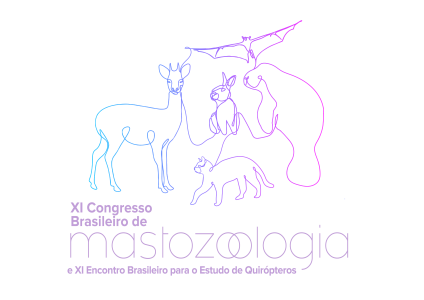Dados do Trabalho
Título:
ALTITUDINAL TRAITS DROVE THE DISTRIBUTION OF TWO SPECIES OF THE GENUS OXYMYCTERUS (RODENTIA, SIGMODONTINAE) IN THE NATIONAL PARK OF CAPARAO, ESPIRITO SANTO, BRAZIL, WITH COMMENTS ON KARYOTYPE DISTINCTION
Resumo:
The genus Oxymycterus Waterhouse (Sigmodontinae, Rodentia) is a diverse and geographically wide-spread group, ranging from Argentina, Uruguay up to the Amazon basin (Hershkovitz 1994). This genus remains poorly understood with regard to species limits, phylogenetic relationships, karyology, natural history and distribution. Morphologically and molecularly the species are well-characterized, but the karyotype fails to delimitate the species because the 2n=54 is highly conserved, with variation in FN=60-64. The National Park of Caparaó(NPC) occupies highlands between geographic limits in south Espírito Santo and southeastern Minas Gerais (Brazil) and is the type-locality of O. caparaoe (Hershkovitz, 1998), described for a single locality at 1800 meters. In this work, we described the karyotype and reconstructed the hierarchical relationship of a sample of 34 Oxymycterus animals, captured at 1063-2123 meters in NPC. We karyotyped and sequenced the mitochondrial cytochrome-b gene to identify the specimens. Metaphases were obtained from bone-marrow cells after conventional and C-banding staining. The 801-bp of the cyt-b were amplified using the MVZ05/MVZ16 primers. To analyze the molecular dataset we used sequences from 34 Caparao's specimens, 24 ingroup specimens and four outgroup taxa available in GenBank. We performed phylogenetic analyses based on the Bayesian inference (BI) using MrBayes and the HKY+G model of nucleotide substitution was selected by PartitionFinder Software according to the Bayesian Information Criterion. The BI-analyses recovered a well-supported clade with 0,14% of divergence including 30 O. caparaoe specimens from the 1800-2123-meters highland, sister group to O. nasutus (nasutus group), with 4% of interclade divergence. The 1063-meters specimens were assigned to O. dasythricus (dasythricus group) with 1,03% of intraclade divergence, and 8% divergent from O. caparaoe. Both species showed 2n=54 and FN=64, with par 1 large subtelocentric, pairs 2-4 medium biarmed (submetacentric or metacentric), pairs 5 and 6 small metacentrics, and pairs 7-26 acrocentrics with variation in size. Both species diverged by the X chromosome morphology: subtelocentric to O. caparaoe and submetacentric to O. dasythricus, both similar in size to pair 8. The Y chromosome is a medium acrocentric on both species, similar in size to pair 15. C-banding showed variation in heterochromatin on short arms of X chromosomes, heterocromatic Y chromosome and heteromorphism in centromeric block of pair 1 in O. dasythricus. Our results revealed the split between O. dasythricus in lowerlands at 1063 meters and O. caparaoe in higherlands at 1800-2200 meters in NPC. We described for the first time the karyotype of O. caparaoe and revisited the karyotype of O. dasythricus, showing that the X-chromosome morphology is effective to distinguish both species. Previous description of O. dasythricus karyotype from Serra do Brigadeiro, in Minas Gerais, registered 2n=54/FN=64, but they misidentified the sexual chromosomes. In this study, we brought up new informations to characterize two species of Oxymycterus, filled some karyological and geographical gaps, corrected some previous karyotype interpretation of O. dasythricus, and increased the sample size of O. caparaoe, a species poorly represented in scientific collections.
Keywords: O. caparaoe, O. dasythricus, species limit, karyotype divergence.
Financiamento:
Fundação de Amparo à Pesquisa e Inovação do Espírito Santo (FAPES) e Conselho Nacional do Desenvolvimento Científico e Tecnológico (CNPq)
Área
Genética
Autores
Letícia Rosário Cruz, Adalmario Neto Silva Freitas, Valéria Fagundes
